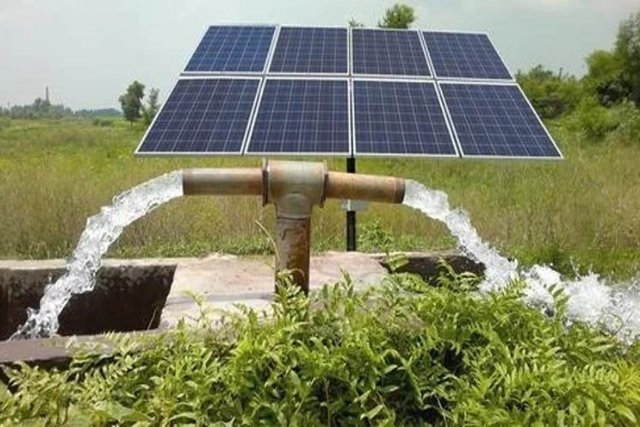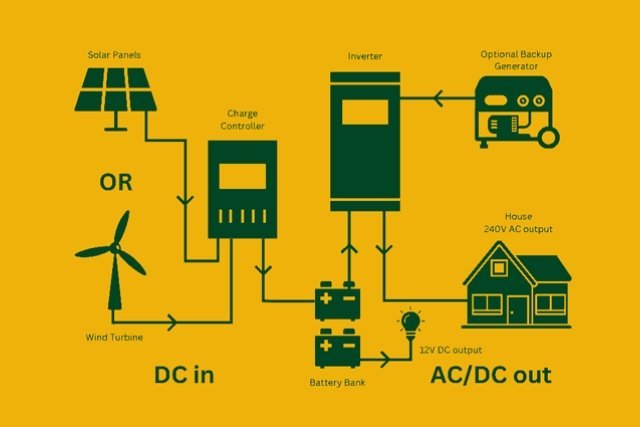Menu
Ut tellus dolor, dapibus eget, elementum ifend cursus eleifend, elit. Aenea ifen dn tor wisi Aliquam er at volutpat. Dui ac tui end cursus eleifendrpis.
Ut tellus dolor, dapibus eget, elementum ifend cursus eleifend, elit. Aenea ifen dn tor wisi Aliquam er at volutpat. Dui ac tui end cursus eleifendrpis.
The system operates on power generated using solar PV (photovoltaic) system. The photovoltaic array converts the solar energy into electricity, which is used for running the motor pump set. The pumping system draws water from the open well, bore well, stream, pond, canal etc. The system requires a shadow-free area for installation of the Solar panel.
The solar water pumping system is capable of running all types of electrical water pumps with applications varying from irrigation to household demands. Irrigation pumps such as submersible, surface or deep well can also be coupled with drip irrigation systems to enhance the returns from this configuration.

A typical solar water pumping system is known by the sum total of solar array size that is required to run the attached pump. A 1000 Wp solar water pump is capable of drawing and pumping approximately 40,000 litres of water per day from a source that is up to 10 meters deep. This is sufficient to irrigate about 2 acres of land with regular crops. A 1000 Wp solar water pump helps save up to Rs 45,000 when compared to equivalent use of a diesel-operated pump over a year.

The photovoltaic principle is the foundation of how a solar pump operates. PV (photovoltaic) systems capture radiant solar energy and convert it into electricity when a solar pump is operating. The entire system received electricity supply as a result of this.
The PV system’s output of direct current is changed into alternating current by the pump’s inverter, which powers the pump. To achieve the highest power point tracking, these inverters also modify the output frequency and voltage in real-time in accordance with variations in the sunlight intensity.
The water lifting system realises the function of switching the municipal electricity that serves as auxiliary energy for the water lifting system as the sunlight’s intensity declines.
A submersible pump can be installed in huge wells and can lift water up to 650 feet. These pumps work directly to switch off batteries, solar panels, and, in certain situations, electricity, as long as the well water is more than 20 feet above the ground.
When the sun is out, the pump runs continuously, pumping water that is then stored in tanks for later use. Inclement weather prevents the sun from shining, which makes it impossible to pump water. As a result, it’s best to only store water in favourable weather conditions.
These types of solar pumps are typically utilised in undrilled, deep water. These pumps are also used for well pumping, irrigation, pressurisation, pond aeration, residential water systems, and livestock watering. 50m is the highest recommended pump depth.
Solar power is harnessed using Solar Photovoltaic (PV) technology that converts sunlight (Solar radiation) into electricity by using semiconductors.
There are different ways to install solar panels for home. First, you have to do homework, such as Choose installation area, select type of mounting structure, and no. of solar panels. For that you need to call our an engineer for site survey from.
To choose the best solar panel for your home and business is a big decision. I tell you, some parameters, that can help to take decisions: use, capacity, technology, durability, temperature, co-efficient, brands, and consumer reviews. To compare solar panels.
It depends on your prospective. In the production of solar cells metals like mercury and lead are used because of which a little number of oxides of the metals are released in the environment. Over a long period of time, it does not cause pollution but looking only at manufacturing it does on a small scale.